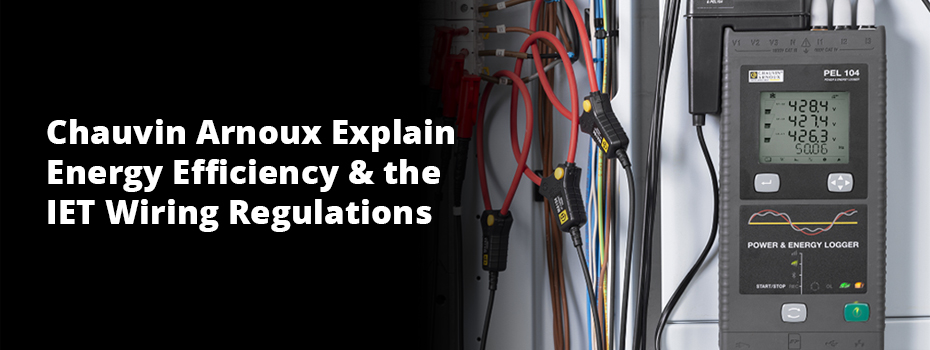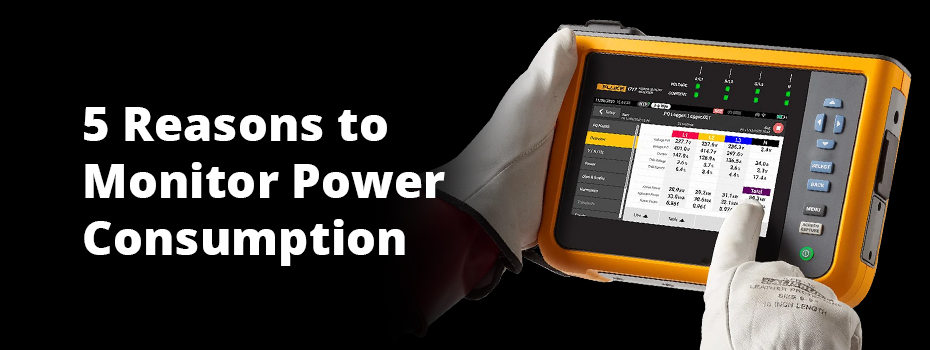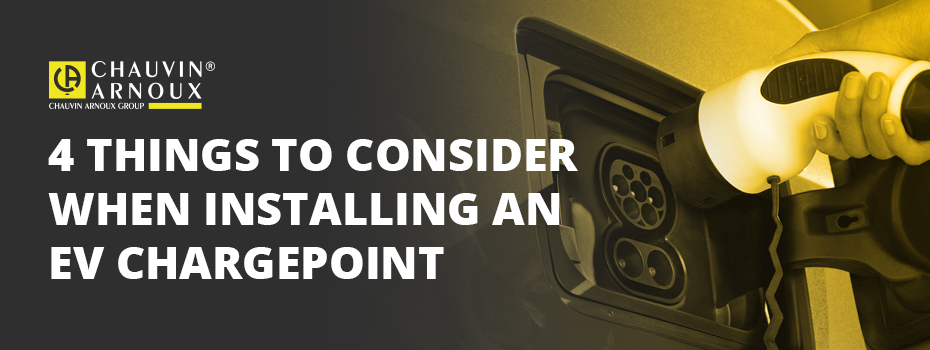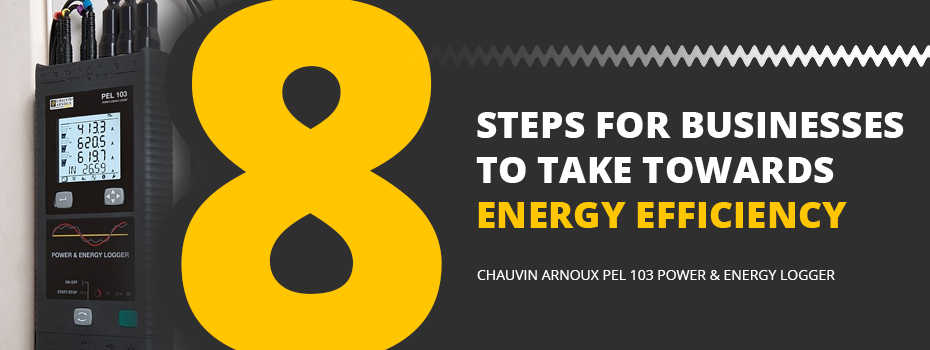 Chauvin Arnoux’s Julian Grant published an article in the October 2022 edition of Professional Electrician detailing four simple tests contractors can add to their arsenal to bolster their income and beat spiralling inflation and surging fuel costs. The information below is taken from that article.[1]
Continue reading →
Chauvin Arnoux’s Julian Grant published an article in the October 2022 edition of Professional Electrician detailing four simple tests contractors can add to their arsenal to bolster their income and beat spiralling inflation and surging fuel costs. The information below is taken from that article.[1]
Continue reading →portable energy logger
-
Chauvin Arnoux Names 4 Tests Electricians Can Perform to Increase Profits
 Chauvin Arnoux’s Julian Grant published an article in the October 2022 edition of Professional Electrician detailing four simple tests contractors can add to their arsenal to bolster their income and beat spiralling inflation and surging fuel costs. The information below is taken from that article.[1]
Continue reading →
Chauvin Arnoux’s Julian Grant published an article in the October 2022 edition of Professional Electrician detailing four simple tests contractors can add to their arsenal to bolster their income and beat spiralling inflation and surging fuel costs. The information below is taken from that article.[1]
Continue reading → -
Chauvin Arnoux Explain Energy Efficiency & the IET Wiring Regulations
 Julian Grant of Chauvin Arnoux published an article in the January 2022 issue of Professional Electrician & Installer explaining an emerging focus of the 18th Edition IET Wiring Regulations: energy efficiency. As energy prices rise and we continue to work towards achieving net-zero emissions by 2050, ensuring electrical installations are energy efficient is more important than ever.[1]
Continue reading →
Julian Grant of Chauvin Arnoux published an article in the January 2022 issue of Professional Electrician & Installer explaining an emerging focus of the 18th Edition IET Wiring Regulations: energy efficiency. As energy prices rise and we continue to work towards achieving net-zero emissions by 2050, ensuring electrical installations are energy efficient is more important than ever.[1]
Continue reading → -
Fluke’s Five Reasons to Monitor Power Consumption
 Monitoring power consumption equips you with the data needed to make important energy management decisions. Knowing your energy usage is critical to understanding the capacity of your existing electrical panel, troubleshooting circuit breaker trips, identifying energy costs, and uncovering energy waste. It can help you to maximise plant safety, decrease and verify bills while increasing energy efficiency, secure rebates and financial incentives, and locate and troubleshoot power quality issues.[1]
Continue reading →
Monitoring power consumption equips you with the data needed to make important energy management decisions. Knowing your energy usage is critical to understanding the capacity of your existing electrical panel, troubleshooting circuit breaker trips, identifying energy costs, and uncovering energy waste. It can help you to maximise plant safety, decrease and verify bills while increasing energy efficiency, secure rebates and financial incentives, and locate and troubleshoot power quality issues.[1]
Continue reading → -
4 Things to Consider When Installing an EV Chargepoint
 The UK government announced a series of measures to end the country’s contribution to climate change by 2050 and achieve a greener transport future. These steps include phasing out the sale of new petrol and diesel cars/vans by 2030 and ensuring that all new cars/vans are fully zero-emissions at the tailpipe from 2035. Plans are supported by over £1.8 billion of government funding intended to encourage the uptake of greener vehicles. Funding includes grants for purchasing zero or ultra-low emissions cars/vans, as well as grants for local authorities, businesses, and homeowners to install EV chargepoints. The UK government has pledged £1.3 billion to accelerate the installation of electric vehicle charging stations in homes and on streets across the UK, as well as on motorways in England.[1] However, installing an EV charger is not as simple as just connecting it to your electricity supply. There are many factors to consider and electrical parameters that need to be monitored. Investing in a portable energy logger, such as Chauvin Arnoux’s PEL103, provides an easy, ergonomic, and economic solution to evaluating your company’s capacity to support multiple EV chargepoints.[2]
Continue reading →
The UK government announced a series of measures to end the country’s contribution to climate change by 2050 and achieve a greener transport future. These steps include phasing out the sale of new petrol and diesel cars/vans by 2030 and ensuring that all new cars/vans are fully zero-emissions at the tailpipe from 2035. Plans are supported by over £1.8 billion of government funding intended to encourage the uptake of greener vehicles. Funding includes grants for purchasing zero or ultra-low emissions cars/vans, as well as grants for local authorities, businesses, and homeowners to install EV chargepoints. The UK government has pledged £1.3 billion to accelerate the installation of electric vehicle charging stations in homes and on streets across the UK, as well as on motorways in England.[1] However, installing an EV charger is not as simple as just connecting it to your electricity supply. There are many factors to consider and electrical parameters that need to be monitored. Investing in a portable energy logger, such as Chauvin Arnoux’s PEL103, provides an easy, ergonomic, and economic solution to evaluating your company’s capacity to support multiple EV chargepoints.[2]
Continue reading → -
Eight Steps Businesses Should Take Towards Energy Efficiency
 It is estimated that most of the UK’s businesses are energy inefficient; recent studies show that some businesses are squandering 50% of their electrical energy usage. Not only is this bad for business as it drives overhead costs up and, therefore, profits down, it also results in unnecessary greenhouse gas emissions. The damaging economic impacts and positive environmental side effects of the COVID-19 pandemic mean it has never been more important to monitor energy usage. PELs (portable energy loggers), such as Chauvin Arnoux's PELs, provide a compact, convenient, and clever solution to monitoring, optimising, and subsequently reducing energy consumption.[1]
Continue reading →
It is estimated that most of the UK’s businesses are energy inefficient; recent studies show that some businesses are squandering 50% of their electrical energy usage. Not only is this bad for business as it drives overhead costs up and, therefore, profits down, it also results in unnecessary greenhouse gas emissions. The damaging economic impacts and positive environmental side effects of the COVID-19 pandemic mean it has never been more important to monitor energy usage. PELs (portable energy loggers), such as Chauvin Arnoux's PELs, provide a compact, convenient, and clever solution to monitoring, optimising, and subsequently reducing energy consumption.[1]
Continue reading → -
Introducing Portable Energy Loggers: What Are PELs & Do You Need One?
 Portable energy loggers, or PELs, are compact, comprehensive test instruments that measure, monitor, and record an array of electrical parameters. They can be used to troubleshoot electrical systems and, more importantly, identify sources of energy and/or power wastage contributing to inflated utility bills, as well as excessive and unnecessary greenhouse gas emissions.[1]
Continue reading →
Portable energy loggers, or PELs, are compact, comprehensive test instruments that measure, monitor, and record an array of electrical parameters. They can be used to troubleshoot electrical systems and, more importantly, identify sources of energy and/or power wastage contributing to inflated utility bills, as well as excessive and unnecessary greenhouse gas emissions.[1]
Continue reading →
Page
Previous
Page 1 of 1
Page
Next


